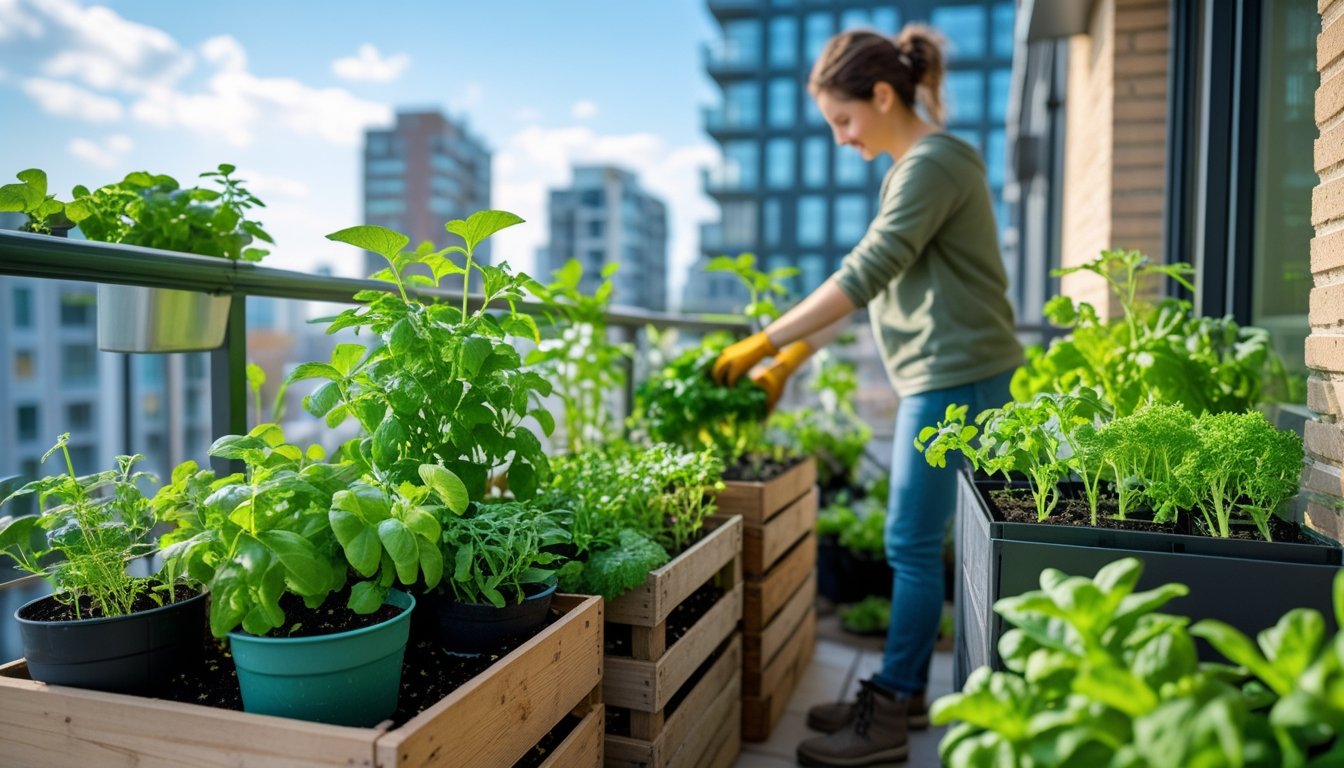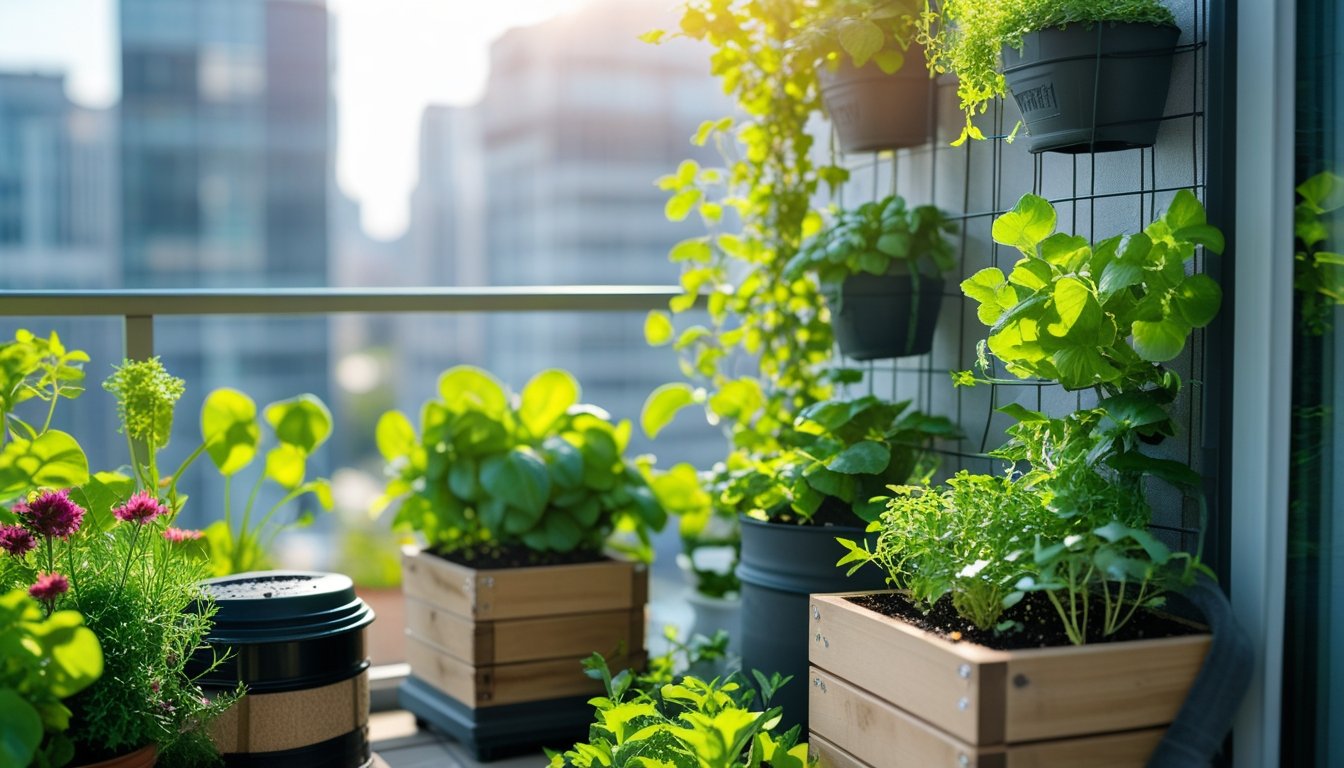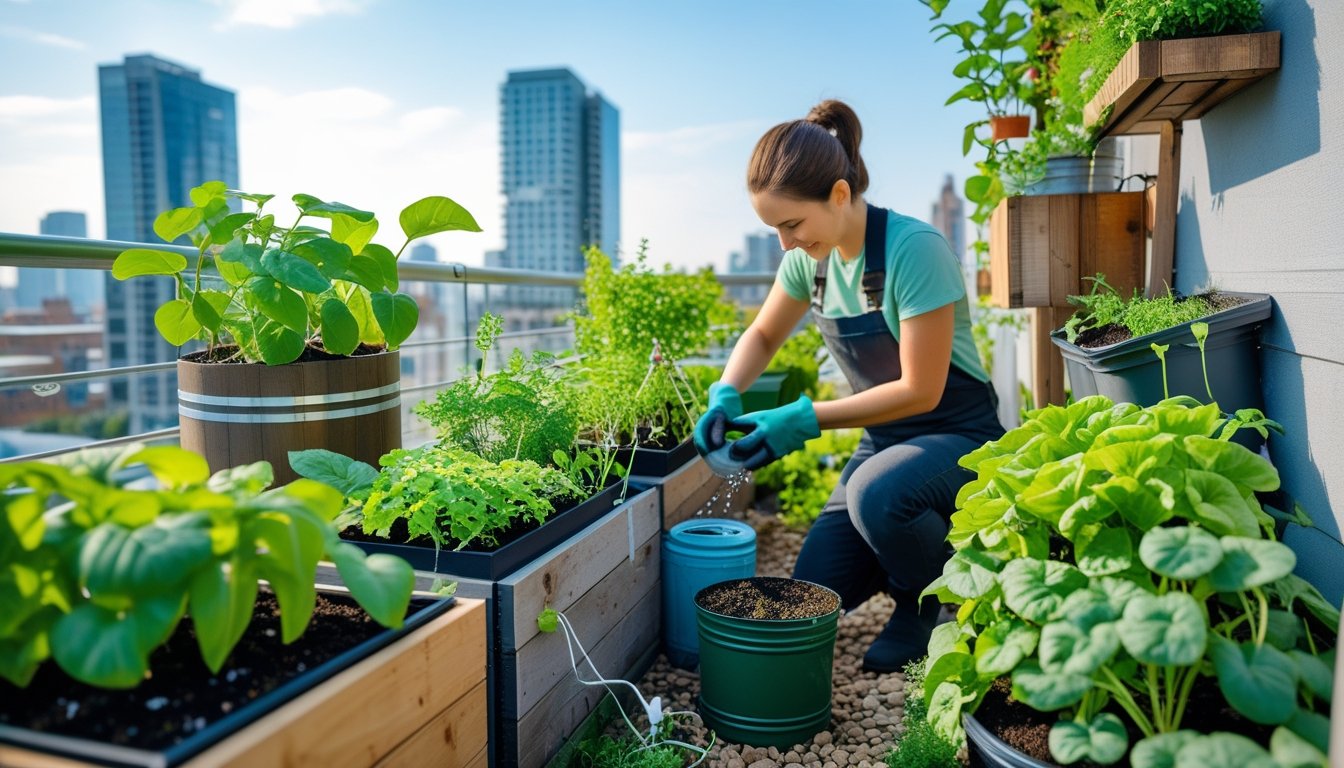Late updated: 18 Nov 2025 10:11
Written by: James Whitaker
Sustainable Gardening Practices For Small Urban Spaces: Maximising Green Efficiency
In the midst of bustling city life, many of us yearn for a slice of nature. But when outdoor space is limited, creating a garden might seem like a daunting task. This is where sustainable gardening practices tailored for small urban spaces come into play, offering innovative solutions that allow us to cultivate vibrant green spaces right at home. The key to success lies in maximising our small spaces while choosing the right plants and sustainable methods to reduce environmental impact.

We can transform balconies, rooftops, and even tiny patios into lush urban gardens by adopting ingenious techniques. Vertical planting, container gardening, and using companion plants can help us make the most of every inch available. The benefits extend beyond aesthetics, as these methods not only provide fresh produce but also promote biodiversity and contribute positively to urban ecosystems. It's a rewarding endeavour that aligns with both personal wellness and environmental responsibility.
By carefully selecting plants that thrive in limited spaces and require minimal resources, we can create low-maintenance, sustainable gardens. Eco-friendly practices such as composting kitchen scraps and collecting rainwater ensure that our gardening efforts contribute to the health of our environment. This approach is both practical and accessible, making the dream of urban gardening a reality for many of us living in tight quarters.
Key Takeaways
- Sustainable gardening maximises small urban spaces.
- Vertical and container gardening optimise space use.
- Choosing the right plants enhances sustainability.
Space-Maximising Sustainable Gardening Methods
In urban areas, space-maximising gardening techniques allow us to create lush green spaces, even in cramped environments. By utilising vertical surfaces, containers, and urban rooftops, we can efficiently transform small areas into sustainable oases that benefit both our living spaces and local ecosystems.
Vertical Gardening Solutions for Urban Settings
Vertical gardening is fundamental in making urban gardens thrive. We can use trellises, wall-mounted planters, and vertical planters to grow plants upwards. This method maximises the use of wall spaces and keeps plants off limited ground areas. Hanging baskets are effective for growing flowering plants or compact herbs where sunlight can reach them easily.
For urban gardeners, vertical gardens are a game-changer. They not only save space but can also beautify dull walls and fences. We can choose from options like window boxes for windowsills or opt for facade greening techniques. Additionally, growing succulents or plants with aeroponic or hydroponic systems ensures lush greenery even with minimal soil.
Creative Container Gardening Approaches
Container gardening is vital for those with limited open land. Using containers enables us to create flexible garden spaces, which can be simple pots, window boxes, or recycled materials. These movable elements can be skilfully arranged to take advantage of sunlight and provide optimal conditions for various plants.
In urban settings, using a mix of container types not only maximises available space but also allows for creative customisation. For instance, combining traditional soil-based plantings with hydroponic systems can boost plant diversity. Container gardening also makes it easier to manage soil quality, watering needs, and the mobility of our garden, making it adaptable to changing seasons and microclimates.
Balcony and Rooftop Garden Strategies
Balcony and rooftop gardens offer unique opportunities to expand our gardening efforts upwards. On a balcony, we can use rail-mounted planters, trellises for climbing plants, and even mini fruit trees in pots. Rooftops, on the other hand, provide a larger canvas and require strategic planning to manage weight and water drainage effectively.
Creating rooftop gardens involves using lightweight soil mediums and implementing efficient irrigation systems, ensuring minimal impact on the building's structure. Here, employing vertical planters or raised beds can create productive green spaces that are easy to maintain. By incorporating such methods, small urban gardens can yield impressive results, offering not just a space for relaxation but a sustainable contribution to urban ecology.
Plant Selection and Sustainable Care for Small Urban Spaces

In small urban gardens, careful plant selection and sustainable care practices are key to creating thriving green spaces. Edible and ornamental plants must be chosen wisely to maximise limited areas, while organic methods of pest control and efficient water use ensure environmental responsibility.
Best Edible and Ornamental Plants for Limited Space
In tiny gardens, choosing compact species is critical. Herbs like basil, mint, rosemary, and thyme fit well into compact containers. Cherry tomatoes, peppers, and a variety of leafy greens such as lettuce, spinach, and kale are excellent choices.
Compact vegetables, like radishes and bush beans, are well-suited for limited areas, while pole beans can climb vertically. Incorporating trailing plants such as nasturtiums adds beauty and saves space. Marigolds serve dual purposes by providing vibrant colour and repelling certain pests naturally, aiding a sustainable ecosystem.
Organic Pest Control and Companion Planting
Organic pest control is pivotal in small urban spaces. We can practice companion planting by strategically placing plants together to deter pests. For instance, marigolds emit natural compounds that repel harmful insects, while nasturtiums attract beneficial ones.
Using physical barriers like nets can protect plants without chemicals, maintaining an organic garden. Maintaining proper garden hygiene by regularly clearing debris reduces pest habitats. Attracting beneficial insects such as ladybugs controls pest populations naturally. This approach helps keep the space eco-friendly and productive.
Efficient Water and Soil Management
Water management is crucial in small spaces. Implementing a drip irrigation system or using rainwater collection ensures efficient water use. Mulching with organic materials conserves moisture and stabilises soil temperature.
Potting soil enriched with organic matter ensures nutrients are available to plants. Involvement in a community garden can provide shared resources and compost, promoting sustainable practices. Crop rotation and succession planting keep soil healthy, yielding fresh produce while preventing nutrient depletion. Adopting these methods fully utilises our environments, forming a biodiverse and nurturing urban garden ecosystem.
Frequently Asked Questions

In urban gardening, efficient composting, maximising vertical spaces, conserving water, and selecting the right plants play key roles in sustainability. Native species and companion planting further contribute to a thriving garden ecosystem.
What are the most efficient composting methods for limited-space gardens?
For small urban spaces, vermicomposting employs worms to rapidly break down organic waste, producing nutrient-rich compost. Bokashi composting, which ferments kitchen scraps with beneficial microbes, also fits well in compact environments due to its small footprint and efficiency.
How can one maximise vertical space for plant growing in urban gardens?
Utilising vertical planters and trellises allows us to grow more plants without needing additional ground space. Hanging pots and wall-mounted systems are excellent methods for optimising available vertical areas, which is advantageous for sprawling urban environments.
What are the best practices for water conservation in small urban gardens?
Drip irrigation systems deliver water directly to plant roots, minimising evaporation and waste. Additionally, harvesting rainwater with barrels and employing mulch to retain soil moisture are effective strategies for conserving water in limited space gardens.
Which are the most suitable plants for high-yield urban gardening with minimal space?
Leafy greens such as lettuce and spinach thrive in small areas and have quick growth cycles. Herbs like basil and mint also perform well in confined spaces, offering high yields with minimal maintenance. Compact varieties of tomatoes and peppers are excellent choices for productive small gardens.
How can companion planting contribute to sustainability in small urban gardens?
Companion planting enhances pest control and pollination, effectively boosting plant health. By carefully selecting combinations of plants that mutually benefit each other, we can improve the resilience and productivity of urban gardens without relying on chemical interventions.
What is the role of native species in enhancing biodiversity in compact urban gardens?
Incorporating native species supports local ecosystems and attracts beneficial insects. These plants are typically well-suited to the climate and soil conditions of the area, reducing the need for intensive care and contributing to a balanced, biodiverse garden.
